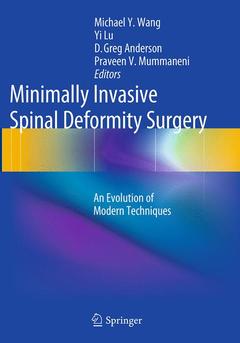Description
Minimally Invasive Spinal Deformity Surgery, Softcover reprint of the original 1st ed. 2014
An Evolution of Modern Techniques
Coordinators: Wang Michael Y., Lu Yi, Anderson D. Greg, Mummaneni Praveen V.
Language: English
Subject for Minimally Invasive Spinal Deformity Surgery:
Keywords
XLIF; aging spine; minimally invasive; percutaneous; spinal deformity
Publication date: 08-2016
Support: Print on demand
Publication date: 01-2014
411 p. · 17.8x25.4 cm · Hardback
Description
/li>Contents
/li>Biography
/li>Comment
/li>
Michael Y. Wang is Associate Professor at the Departments of Neurological Surgery & Rehabilitation Medicine, University of Miami, Miami, FL, USA
Praveen V. Mummaneni is at the Department of Neurosurgery at the University of California, San Francisco, CA, USA
D. Greg Anderson is Professor at the Departments of Orthopaedic Surgery and Neurological Surgery at the Thomas Jefferson University and Rothman Institute, Philadelphia, PA, USA
Numerous step-by-step tutorials help the reader to learn quickly
Comprehensive in scope and serves as a stand-alone educational resource for spine surgeons
Contains new information heretofore only been available in course seminars




